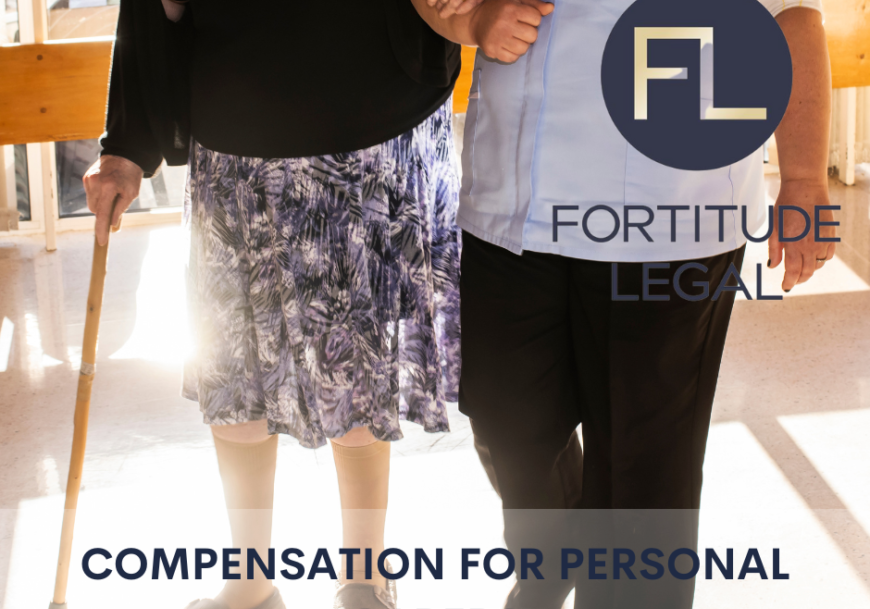The ‘Once and For All’ Rule
Tags:

Why we must get it right the first time!
At Fortitude Legal, we understand that the time taken to prepare, pursue and present a Common Law claim can be frustrating. We must ensure we have tracked down every important piece of evidence, every important witness, had all pertinent issues addressed and prepared our client’s case to the highest of standards. We must also wait until our client’s injuries have stabilised, and the full extent of their loss is known, as far as is practicable.
The need for such thorough preparation is not only to ensure that we get the best result possible for each and every client, but also lies in the “ONCE AND FOR ALL” rule. A Plaintiff not only carries the burden of proving their claim (‘the burden of proof’) but they only have one chance to do so.
As far back as the 1700’s it was held in England that an injured Plaintiff will have only one action at common law for their damages. So, a Plaintiff who had suffered injury caused by the negligence of another party who brought their claim and received damages for their loss, could not then seek to bring a further claim for damages arising out of the same negligent act or omission simply because at a later point in time their condition deteriorated or for example, came to surgery for those same injuries and had therefore endured greater loss and suffering.
This rule was transported to, and has always applied in Australia.
This rule in part explains why common law claims for damages can take at times years to prepare and pursue. Indeed, as lawyers representing injured people, our minds are never without this rule in our contemplation. That is not to say that some common law claims cannot be brought expeditiously if the evidence permits (more on this below), however maximising our client’s rights by ensuring that everything is in place prior to negotiating a settlement, is paramount.
Lump Sum Damages
It follows on from the operation of this “ONCE AND FOR ALL” rule that damages at common law are awarded as a lump sum. Some criticism has been levelled at this method of providing for damages including the following:
- There is an inherent difficulty, and in many respects an impossibility, in assessing future loss beyond the date of a settlement conference, a mediation or a trial; and
- The lump sum is received now (and with certain discount factors applied to the lump sum to reflect the fact that the money is arguably worth more in the hand now, and various other factors) but the losses are not necessarily faced until a future point and the damages may be dissipated before then.
However, the need for finality and certainty for both sides (the injured Plaintiff and the negligent Defendant and its insurer) has been seen as a very powerful factor for retaining the lump sum nature of damages payments.
Telling YOUR Story
So, how do we as personal injuries lawyers assist our clients in establishing their future loss? Essentially, we tell YOUR story. This is done through a number of ways and is based on our gathering of, preparation of and presentation of the relevant evidence in our client’s case, including:
- Taking very detailed and ongoing instructions from our client as to work history pre-injury, attempts to return to work post-injury, attempts to retrain, career aspirations/intentions and treatment plans;
- Taking very detailed and ongoing instructions from our client as to the stability of their injuries (that is, have they completed the course of treatment recommended for their particular injuries and circumstances so we can assess the permanency of their present state?);
- Obtaining all financial and other evidence to prove allegations in respect of future loss (although the past is not necessarily an indicator of what a person would have gone on to do in the future had the injury not occurred, it is a very relevant and powerful foundation);
- Seeking detailed comments from treating medical teams by way of reports detailing future treatment needs, the prognosis and the likelihood of certain needs eventuating;
- Seeking detailed comments from appropriately qualified independent expert witnesses (known as medico-legal doctors) by way of reports detailing future treatment needs, the prognosis and the likelihood of certain needs eventuating;
- Always revisiting the totality of the evidence to ensure ‘the time is right’ for our client’s case to be formally presented and negotiations with the other side entered into.
On this last point, the lawyer acting in your best interests will not be afraid to regularly and diligently review the evidence in your case to see if you should be advised that your case should be brought now or deferred until a later point (within the parameters of limitation dates – time limits).
Our Duty To YOU
At Fortitude Legal, while we recognise the need to achieve a timely outcome (noting the ongoing pressures – financial and otherwise – clients suffer the longer a case takes), we aim to never compromise what is in our client’s best interests. Our first duty as lawyers is to the Court and the proper administration of justice and to our clients. There is a saying that justice delayed is justice denied. This is very true, however if a case is rushed, under-prepared and not ready to present, it is unlikely a Plaintiff will receive the best outcome possible.
It is important in managing a case that our clients understand why we do what we do and when it has to be done. At Fortitude Legal, we pride ourselves on clear and constant communication with each and every client and our door is always open to answer any question no matter how big or small.
At Fortitude Legal – We’re In YOUR Corner!
Contact Us
Contact Form
"*" indicates required fields








